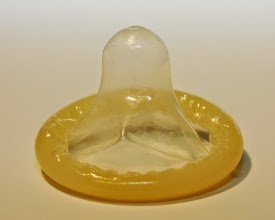 Yesterday I wrote about LGBTQAI individuals being left out of safer sex conversations. They do, however, get included in many conversations about healthy relationships and more. People with special needs, however, are endemically left out of sexuality education in all ways. Today’s lesson goes a little way towards addressing that vast gap as it applies to condom use.
Yesterday I wrote about LGBTQAI individuals being left out of safer sex conversations. They do, however, get included in many conversations about healthy relationships and more. People with special needs, however, are endemically left out of sexuality education in all ways. Today’s lesson goes a little way towards addressing that vast gap as it applies to condom use.
Acknowledging that people with special needs are sexual beings is often a leap for parents, care givers, and community members in the first place. That they are not only sexual, but are also in need of education for safer sex practices is a critical evolution our culture needs to make.
Towards that goal, today’s lesson from Teaching Safer Sex:
SAFE AND SAVVY CONDOM USER: Teaching Condom Use to an Audience with Special Needs
By Lizbeth Cruz and Melissa Keyes DiGioia
Objectives
By the end of this lesson, participants will be able to:
- Identify two examples of when a condom is unsafe for use.
- Demonstrate an understanding of how to check that a condom is safe for use.
- Name three ways a condom can be used safely.
Rationale
Condom availability at local pharmacies, groceries and health centers, as well as high rate of contraceptive effectiveness, make the condom a desirable prevention option for people with intellectual and developmental disabilities. Since the effectiveness of the condom is largely impacted by the user, individuals need vital information about correct condom application and behaviors that can contribute to user error. Unfortunately, lessons addressing safer sex designed specifically for people with intellectual and developmental disabilities are in short supply.
This lesson is geared for moderate- to high-functioning individuals with intellectual and developmental disabilities. Participants will practice visual and tactile skills designed to personalize behaviors that contribute to user success. Additionally, they will review and apply basic information about behaviors that contribute to user error. Repetition, review and practice are all incorporated within the lesson in order for participants to master correct and consistent condom use.
Note: This lesson solely addresses male condom usage. It is important that participants learn about sexual anatomy prior to this lesson. Lesson plans about sexual anatomy and privacy can be found in The Family Life and Sexual Health Curriculum special education series. Information about the lesson series can be found on the Educator Resource: Safer Sex Resources for Special Needs Audiences. Educators are strongly encouraged to modify the teaching techniques to best meet the needs of the group.
The lesson takes leaders and participants through condom safety in clear, identifiable steps. Starting with demonstration condoms that range from safe to use to very degraded, the hands-on nature of this lesson offers a concrete process for safer sex. The explanations include points that are far too often overlooked in general populations too. For example, condoms are put on an erect penis right before having sex. All kinds of people who are sexually inexperienced and enthusiastic about safer sex may make this mistake (I know I’ve worked with a few of them…)






